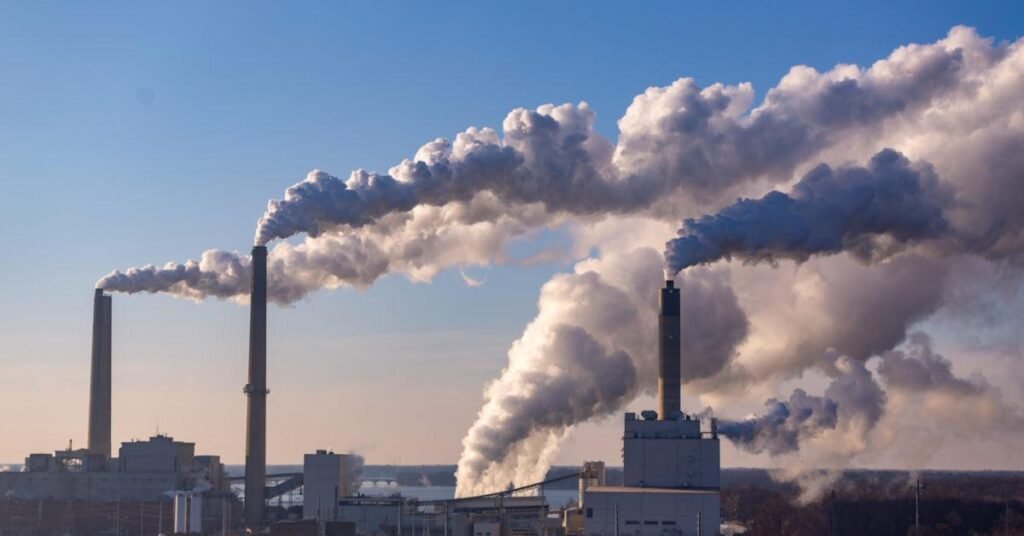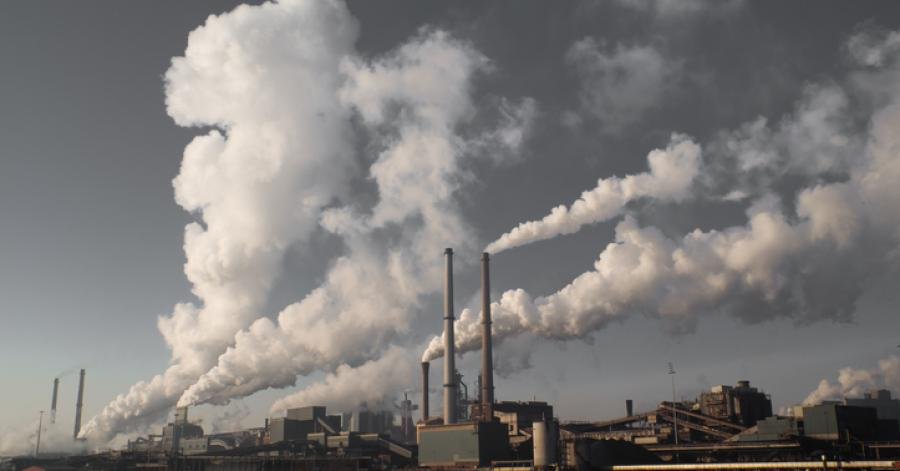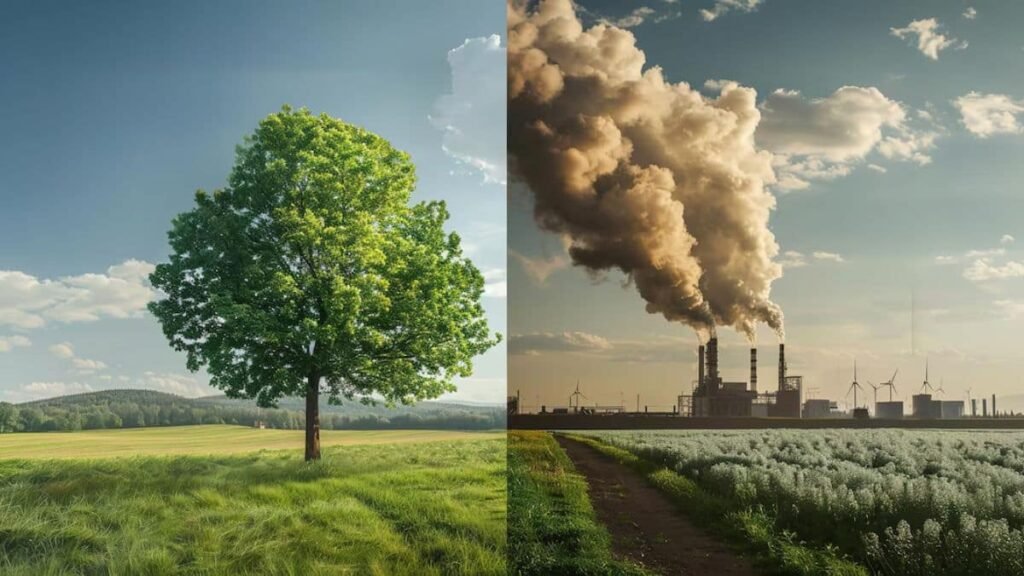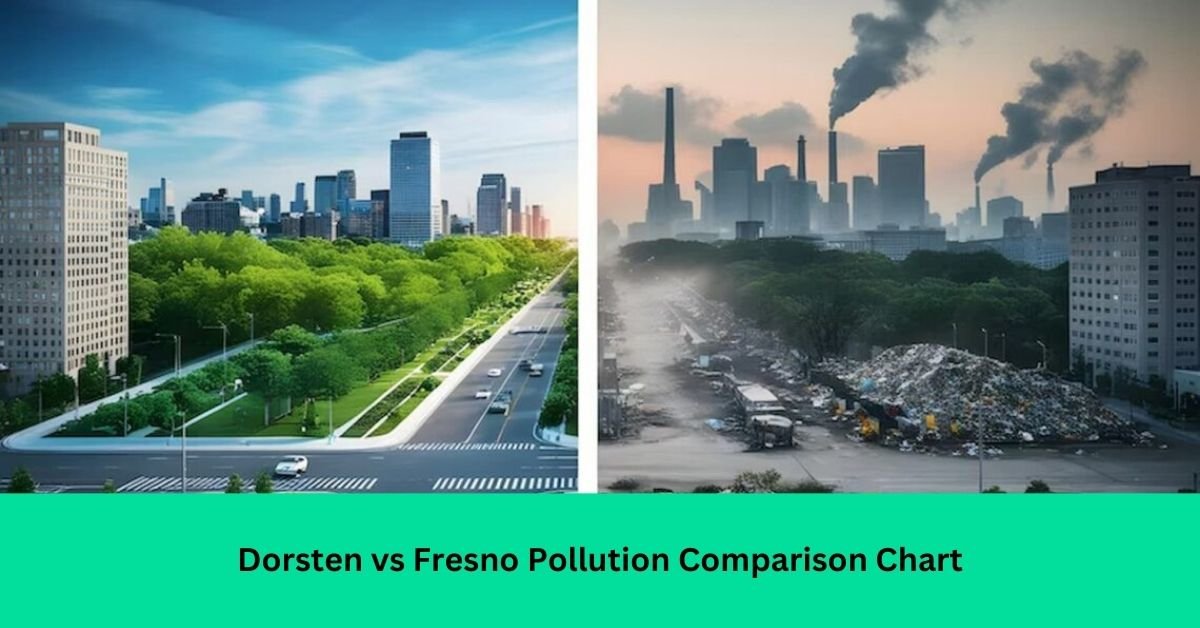I noticed big differences when I learned about the pollution levels in Dorsten and Fresno. Dorsten had much cleaner air, which made me realize that having fewer people can help reduce pollution. In Fresno, the larger population leads to more traffic and higher pollution.
Knowing pollution levels in cities is vital for both residents and local leaders. This article compares pollution in Dorsten, Germany, and Fresno, California, focusing on air quality and water pollution. The Dorsten vs Fresno pollution comparison chart, will highlight each city’s challenges and provide helpful information.
Introduction to Pollution in Urban Areas:
1. Urban Growth:
As cities expand, they attract more residents, leading to more traffic and waste production. This growth typically results in higher levels of pollution in urban areas.
2. Industry and Traffic:
Many cities have factories and busy roads that produce harmful emissions. These emissions can lead to poor air quality and contaminate local water sources, resulting in increased health risks for residents.

3. Health Effects:
Pollution can lead to serious health problems for people living in urban areas. It can cause respiratory issues, allergies, and other diseases. Long-term exposure to pollution can also increase the risk of more severe health conditions.
4. Local Regulations:
Cities typically have rules to control pollution and protect the environment. However, the effectiveness of these regulations can vary based on local conditions. In some areas, enforcement may be weak, making it harder to reduce pollution levels.
Overview of Dorsten and Fresno:
1. Dorsten, Germany:
Dorsten is a small city located in North Rhine-Westphalia, known for its rich history and green spaces. With a population of about 80,000, it has a quieter atmosphere compared to larger cities. The city’s focus on sustainability and environmental protection helps maintain better air quality.
2. Fresno, California:
Fresno is a larger city in California’s Central Valley, with a population of around 530,000. It serves as a major agricultural hub, contributing to its higher levels of pollution. The city’s rapid growth and heavy traffic can lead to air quality challenges, making it essential to address environmental concerns.
Strategies for Pollution Reduction:
1. Dorsten:
Sustainable Transportation: Encouraging public transport and cycling to reduce traffic emissions.
Green Spaces: Maintaining parks and natural reserves to absorb pollutants and improve quality of life.
Strict Regulations: Continued enforcement of EU environmental laws to maintain air and water quality.
2. Fresno:
Improved Air Quality Initiatives: Programs aimed at reducing vehicle emissions and promoting cleaner energy sources.
Water Management: Initiatives to reduce agricultural runoff and improve water treatment facilities.
Community Engagement: Involving residents in local environmental decisions and educating them about pollution sources.
Read: CryptoWeeksBloomberg: Simplifies The Crypto Maze with Expert
What Role Do Government Regulations Play In Pollution Control?

1. Setting Standards:
Governments establish laws and regulations that set acceptable limits for pollutants in the air, water, and soil. These standards help ensure cleaner environments.
2. Monitoring and Enforcement:
Regulatory agencies monitor pollution levels and enforce compliance with environmental laws. They conduct inspections and can impose penalties for violations, encouraging businesses and individuals to follow the rules.
3. Promoting Technology and Innovation:
Regulations often encourage the development of cleaner technologies. Governments may provide incentives for businesses to adopt eco-friendly practices and invest in renewable energy sources.
4. Public Awareness and Education:
Regulations often include educational programs to inform the public about pollution and its effects. Raising awareness can lead to more community involvement in protecting the environment.
What Are The Main Sources Of Pollution In Fresno?
1. Traffic Emissions:
Heavy traffic from the large population leads to significant vehicle emissions, contributing to air pollution with harmful substances like nitrogen oxides (NOx) and particulate matter (PM).
2. Agricultural Activities:
Fresno’s status as a major agricultural hub means that farming practices, including the use of pesticides and fertilisers, release pollutants into the air and water, impacting environmental quality.
3. Industrial Emissions:
Local industries emit various pollutants into the atmosphere, with factories and manufacturing plants contributing to both air and water pollution through harmful chemical releases.
What Measures Are Being Taken To Reduce Pollution In Fresno?

Fresno is taking steps to reduce pollution by improving public transportation and promoting electric vehicles to cut down on car emissions. The city is also enforcing stricter rules on factories to limit their pollution.
Plus, they are investing in renewable energy sources. Community programs help educate people about pollution and encourage them to adopt cleaner habits.
How Climate Influences Pollution Levels in Dorsten and Fresno?
1. Weather Patterns:
Dorsten experiences a temperate climate with moderate rainfall, which helps to disperse pollutants and improve air quality. In contrast, Fresno has a dry, hot climate, which can trap pollutants in the air, leading to higher ozone levels, especially during the summer months.
2. Air Circulation:
Dorsten benefits from better air circulation due to its geographical location in Europe. This helps to reduce the concentration of air pollutants. Conversely, Fresno’s Central Valley is surrounded by mountains, creating a “bowl” effect that can hold pollutants and worsen air quality.
3. Seasonal Changes:
In Dorsten, seasonal changes bring varying weather conditions, which can dilute and disperse pollution. Fresno, however, may face stagnant air during hot weather, leading to the accumulation of pollutants and increased smog levels.
4. Humidity and Rainfall:
Higher humidity and regular rainfall in Dorsten help wash away airborne pollutants. In contrast, Fresno’s lower humidity and infrequent rain can allow pollutants to linger longer in the air, contributing to poor air quality.
What Measures Are Taken In Dorsten To Reduce Pollution?
1. Sustainability Initiatives:
Dorsten promotes sustainability through various programs, focusing on energy efficiency, waste reduction, and the use of renewable energy sources. This helps minimise pollution and encourages eco-friendly practices among residents.
2. Public Transportation Improvements:
The city has invested in enhancing public transportation options, making it easier for residents to use buses and trains instead of driving. This reduces vehicle emissions and traffic congestion, leading to better air quality.
3. Green Spaces and Urban Planning:
Dorsten incorporates green spaces and parks into its urban planning. These areas help absorb pollutants, improve air quality, and provide recreational spaces for residents, contributing to a healthier environment.
4. Strict Environmental Regulations:
The city enforces strict environmental regulations on industries and businesses to limit emissions and waste. Regular monitoring ensures compliance, helping to keep pollution levels low.
How Can Cities Learn From Each Other Regarding Pollution Control?

1. Best Practices Sharing:
Cities can exchange successful pollution control strategies and policies. By learning from what has worked in other places, they can implement similar approaches tailored to their own situations.
2. Data Collaboration:
Cities can work together on research projects to collect and analyze pollution data. Sharing findings helps identify effective interventions and informs better decision-making.
3. Networking and Conferences:
Attending environmental conferences allows city officials to connect, share experiences, and discuss challenges. These events can inspire collaboration and innovative solutions.
4. Community Engagement:
Cities can learn from each other’s community outreach efforts. Successful programs can serve as models for raising awareness and encouraging public participation in pollution control initiatives.
Read: TheHomeTrotters.com: Your Go-To Source for Home Decoration!
FAQs:
What are the main sources of pollution in Dorsten?
The main sources of pollution in Dorsten include local industries, traffic emissions, and agricultural activities nearby.
How does air quality in Fresno compare to Dorsten?
Fresno generally has poorer air quality than Dorsten, often exceeding safe limits for pollutants like PM2.5 and ozone.
What is the importance of green spaces in urban areas?
Green spaces play a crucial role in improving air quality, providing recreational areas, and enhancing the overall quality of life for residents.
Are there specific water quality issues in Fresno?
Yes, Fresno struggles with agricultural runoff, particularly nitrates, which can contaminate local water supplies.
How can residents help improve air quality in their cities?
Residents can help by using public transportation, reducing car usage, and participating in local environmental initiatives to promote cleaner air.
Conclusion:
The Dorsten vs Fresno pollution comparison chart highlights the various environmental challenges and solutions in both cities. Dorsten has advantages from strict regulations and eco-friendly initiatives, while Fresno encounters major obstacles because of its agricultural activities and geographical features.
Read:





